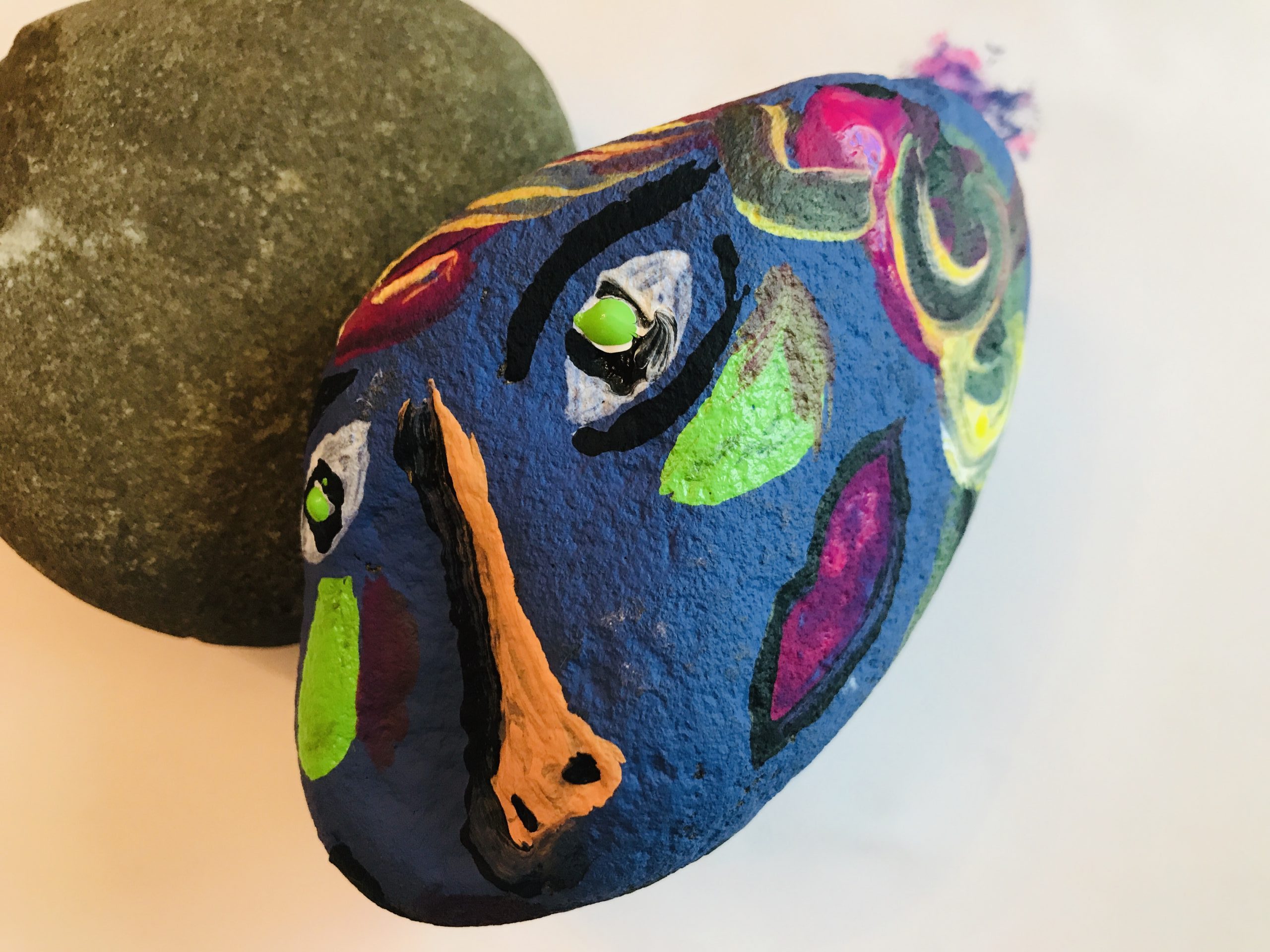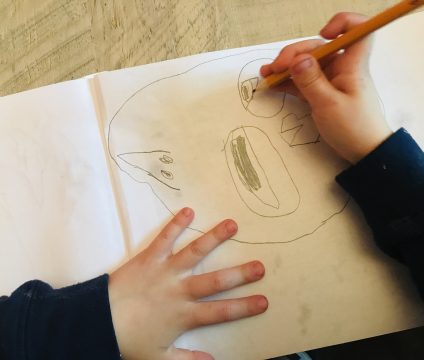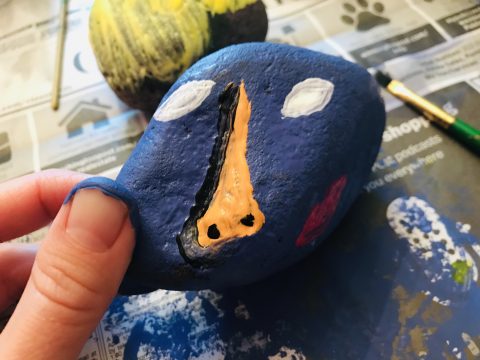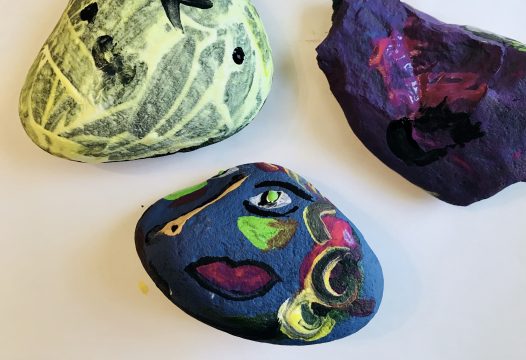Picasso Rocks!

Transform a rock into a colorful work of art inspired by Pablo Picasso’s vibrant and expressive portraits.
We want to see your creations! Share on social media @hirshhorn with #HirshhornInsideOut.
Time: 30–45 minutes
Skill Level: Beginner
Topic: Portraits

Pablo Picasso. Bust of a Woman (Dora Maar), 1938. Hirshhorn Museum and Sculpture Garden, Smithsonian Institution, Washington, DC, Gift of Joseph H. Hirshhorn, 1966
LOOK CLOSELY
What do you see? Describe the colors, lines, and shapes. Can you identify specific features?
What do you think about this painting? Is there anything unusual about the artist’s use of color or the placement of facial features?
You probably noticed that the colors and facial features look unrealistic. The face is painted in shades of green, purple, and pink. The background is a vibrant yellow. One eye is placed higher than the other, just above a nose showing the face in profile. At the same time, the other eye looks directly at the viewer. This gives the impression that the face is looking in two directions at once.
This painting is titled Bust of a Woman (Dora Maar), and Picasso completed it in 1938. It’s a portrait of Dora Maar, who was a French photographer and painter and Picasso’s close friend. Maar was also an artist, and she photographed the creation of one of his most famous works, Guernica, which he completed in 1937, one year before this painting.
In Picasso’s seven-decade career, his most frequent subjects were people and portraits. Picasso experimented with different styles and is famous for helping to create a new style called Cubism. Cubist artworks reduce objects down to lines and geometric shapes, distorting figures and allowing multiple angles to be shown at once. Remarking on his unique style, Picasso once said, “I paint objects as I think them, not as I see them.”
See more of Pablo Picasso’s work in the Hirshhorn collection.
MAKE IT




Picasso painted Bust of a Woman (Dora Maar) on a flat canvas. This project takes inspiration from the vibrant colors and Cubist shapes in Picasso’s painting but uses the facelike 3D surface of a rock.
- Gather your materials. For this project, you’ll need a round rock, some acrylic paint (watercolor and oil paints are not recommended for this project), and brushes. You may also want to set out a tray or newspaper to work on to keep your area clean.
- Examine your rock. A rock is your canvas for this project. Examine its shape. What does it look like? Are there curves or indentations that resemble certain facial features, such as a nose or chin?
- Sketch a practice portrait using geometric shapes and lines. Who would you like to paint? Picasso often sketched his ideas in pencil before painting. You might sketch from life (a real person who is with you) or from a photograph. Use only lines and geometric shapes (triangles, squares, circles) for the person’s face. Experiment with where you place different features. Note: If your child is under the age of three, they will likely be unable to draw most shapes. You might cut out shapes for them to experiment with, or skip this step and go right to painting, focusing more on use of color and line.
- Paint your rock. Try using bright, vibrant colors and experiment with the placement of each feature. In this project, we started by painting the whole rock purple for the face’s skin. After the purple dried, we added green and orange for its features. A natural curve in the rock creates a triangular nose. One eye is placed higher than the other, and the lips are off to the side.
- Name your rock. Picasso often removed the person’s real name for his portrait titles, simplifying them to “Woman” or “Man” or naming the objects pictured. You can choose to name your rock in this style or give it a name that suits your own unique style! Note: In the last photo, notice how each person approached this project differently. The yellow rock uses black lines for facial features that are mixed up, and the bright purple rock features a vibrant pink color. Your child may take one of those approaches, or any other—and that’s perfectly fine!